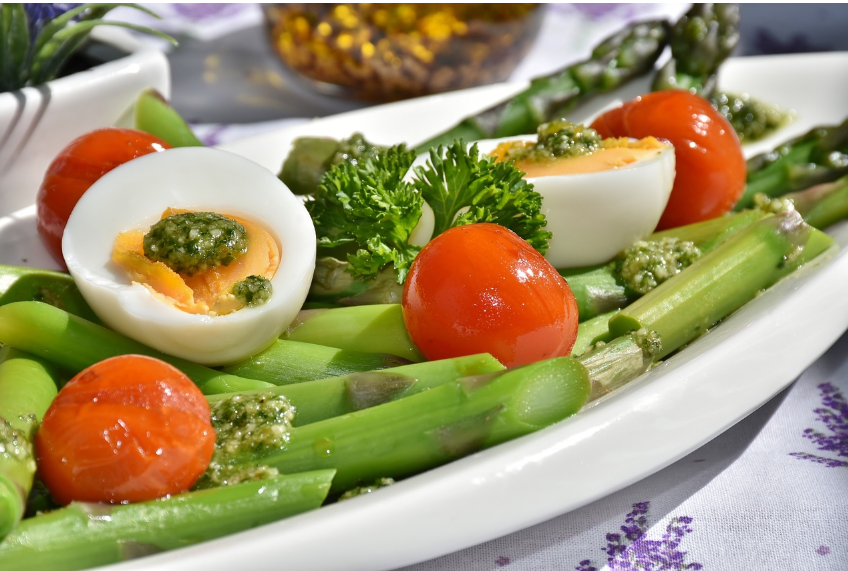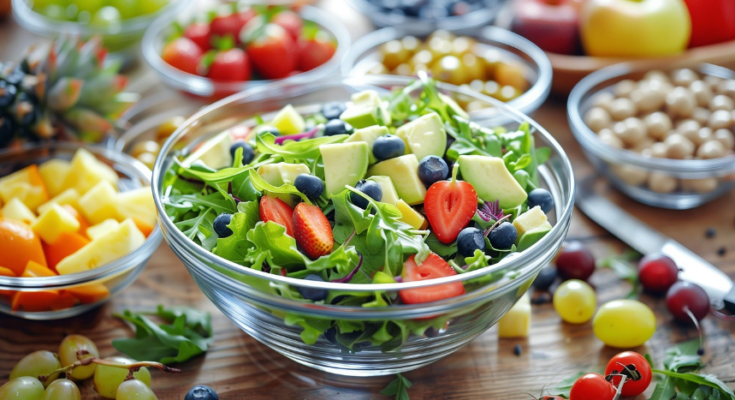What Are the Best Foods for Sustainable Weight Loss?
In our rapid-paced fast-food culture today, many people (and companies) tout rapid weight loss as the ultimate goal. The reality is that the efforts required to produce sustainable weight loss that you can be happy with (without harming your health) usually require careful planning and balance. Food is one of the most effective tools you can use. In this article, we will cover the best foods for sustainable weight loss, with scientific evidence and practical examples. Whether you are taking your first steps towards better eating habits or whether you are looking to re-evaluate your options, this article will guide you through your food choices for sustainable weight loss.
Recognizing Sustainable Weight Loss
Sustainable weight loss implies that you lose weight at a slow, steady rate and maintain it over the longer term. Sustainable weight loss focuses on making permanent lifestyle adjustments as opposed to on quick fixes from extreme dieting and starvation. Experts recommend losing only 1-2 pounds a week using combinations of
Healthy eating
- Physical activity
- Mindful habits
- The ability to change behaviour
One of the components of this process is emphasizing nutrient density, meaning foods that are rich in vital nutrients but relatively low in calories.
The Importance of Diet Over Exercise While exercise is important for overall health and muscle tone, the impact of what you eat is probably a bigger factor in your weight loss than exercise. You can’t out-exercise a bad diet. Here are some reasons food matters:
- Calories in have to be less than calories burned. To be considered weight loss “success”, you have to have a calorie deficit. To gain a calorie deficit, eating fewer calories is easier than burning off those calories.
- Satiety: Certain foods keep you feeling full longer and help control your overall food intake.
- Nutrient balance: Foods have different nutrients that help keep metabolism and energy levels optimal. Read on to learn about the best foods that can aid in weight loss
25 Foods that Encourage Sustainable Weight Loss
1. Leafy Green
Vegetables Examples: spinach, kale, arugula, and Swiss chard. They add bulk and volume to your foods without adding calories and are great at helping you feel full.
Pro Tip: Use leafy greens as your base for salads, smoothies, or stir-fry.
2. Whole Eggs
They are now a superfood for weight loss. Because they are a great source of high protein and healthy fat, they will definitely support your overall satiety. Studies indicate that eating eggs for breakfast increases feelings of fullness and can decrease the total calories eaten throughout the day.
3. Oats
Oatmeal is a whole grain with a good supply of fiber, particularly beta-glucan, that promotes heart health and fullness. Choose: Unsweetened, steel-cut, and rolled oats. Avoid anything sugary (instant).
4. Fatty fish
Examples: salmon, sardines, and tuna. Both have been suggested to promote metabolism, and eating fish will also decrease inflammation—an increasing common problem in obesity.
5. Chia Seeds
Chia seeds, once soaked, occupy space in your stomach and allow for prolonged fullness. They are dense in omega-3s, fiber, and protein.
They can be added to smoothies, oatmeal, yogurt, or any other dish you would use in cooking or baking.
6. Greek Yogurt
Especially full-fat, unsweetened Greek yogurt. A delicious breakfast or snack served with seeds and berries.
7. Legumes
Examples: lentils, black beans, kidney beans, chickpeas Legumes contain protein, fiber, iron, and several B vitamins, keeping you feeling satisfied and also stabilizing blood sugar.
8. Berries
Examples: blueberries, blackberries, strawberries, raspberries Berries are low in sugar and calories but high in fiber and antioxidants. They help satisfy sweet cravings and do not induce a massive insulin spike.
9. Avocados
10. Nuts
Examples: Almonds, walnuts, pistachios Though calorically dense, studies have demonstrated that nuts can help with weight loss by enhancing feelings of fullness and supporting metabolic health. 11. Sweet Potatoes A complex carbohydrate that is rich in fiber and provides slow-releasing energy, sweet potatoes are also a great source of potassium and vitamin A.
12. Cruciferous Vegetables
Examples: Broccoli, cauliflower, Brussels sprouts These vegetables are low in calories but high in fiber and a range of nutrients.
13. Quinoa
A gluten-free whole grain, quinoa is higher in protein and fiber than most whole grains and is also a good substitute for rice. Eating quinoa can help stabilize blood sugar levels.
14. Apple Cider Vinegar
ACV can lower blood sugar levels and insulin spikes, and, in some cases, it may stimulate feelings of fullness. Just be sure to dilute it in water.
15. Green Tea
Green tea is endowed with caffeine and EGCG, which denotes a structural class of compounds that have, in several studies, been shown to stimulate metabolism and fat oxidation.
16 Lean Proteins
Examples: Chicken breast, turkey, tofu Protein is the most filling macronutrient and helps to maintain muscle when losing fat.
17 Whole Fruits
Some diets avoid fruit altogether; however, whole fruits such as apples, pears, and oranges are relatively low in calories and are full of fiber. Eat them whole instead of just juicing to get the highest satiety.
18 Cottage Cheese
If you are looking for something that’s full of protein and calcium, low in fat, and that will fill you up, try cottage cheese. It’s a great snack that can help curb cravings.
19 Zucchini and Squash
Foods can be low in calories and/or carbs, sometimes they can stack. Zucchini and squash are great examples of volume-based foods with a lot of variety. You can spiralize zucchini and squash if you use them as a pasta substitute.
20 Pumpkin
Pumpkin is a wonderful food that is high in fiber, low in calories, and high in vitamin A. Pumpkin puree (not the pie mix) is a great way to add a serving of veg into soups and smoothies.
21 Mushrooms
Mushrooms are low-calorie foods that are full of umami flavor. Mushrooms are excellent meat substitutes or can be used to add volume to a dish.
22 Popcorn
(Air-popped) Popcorn can be a great snack that is high in fiber and low in calories. Avoid the butter, salt, and sugar.
23. Cabbage
Another cruciferous veggie that is filling, low in calories, and gut-friendly.
24. Bell Peppers
Bell peppers are tasty, colorful, and full of vitamin C and fiber. They can be enjoyed on their own as a snack or in stir fries.
25. Spices
Examples include cayenne, turmeric, and cinnamon. Some spices may increase fat burning, help reduce hunger, or help stabilize blood sugar.
Foods to Avoid or Limit
For sustainable weight loss, it is important to know what foods to avoid as much as it is important to know what foods to eat.
Highly Processed Foods:
- Chips, cookies, candy
- Frozen meals and ready to eat snacks.
Sugary Drinks:
- Soft Drinks
- Sweetened Coffee
- Drinks Energy
Drinks Refined Carbohydrates:
- White Bread Cakes,
- Cookies and Donuts
- Pasta (unless you’re eating whole grain)
Excess Alcohol:
Alcohol metabolizes like sugar and can interfere with fat metabolism, as well as aspects of impulse control.
Constructing a Sustainable Weight Loss Eating Plan
Step 1: Emphasize Whole Foods
Build your diet around primarily unprocessed,real foods, aiming for 80–90%
Step 2: Use the Plate Method
Simply divide your plate:
- ½ vegetables,
- ¼ lean protein or fish,
- ¼ whole grains or starches
Step 3: Eating Mindfully
Take your time when enjoying your meal. Avoid eating in front of screens (smartphones, computers, TVs). Stop eating when you feel 80% full.
Step 4: Drink Plenty of Water
Hunger can sometimes actually be dehydration.
Example of a Sustainable Eating Day Plan
Breakfast: Oatmeal with chia seeds, blueberries, and a sprinkling of cinnamon
Snack:Greek yogurt with walnuts
Lunch: Grilled chicken breast, quinoa, and steamed broccoli
Snack: Apple slices with almond butter
Dinner: Baked salmon, sweet potato, and kale salad Drink: Green tea or water lemon
Conclution
Sustainable weight loss is not about willpower or perfection; it is about developing meaningful practices with foods that highlight your health and wellness goals. Eating a balanced approach of whole foods (over processed foods) can reset your metabolism, reduce cravings, and give you the energy to live a quality life. In the end, we know that small, consistent steps are more powerful than extreme changes that don’t stick. By introducing these 25 powerful foods onto your plates and reducing dangerous foods, you will set yourself up for success! Not only on the scale—but overall health and happiness.





